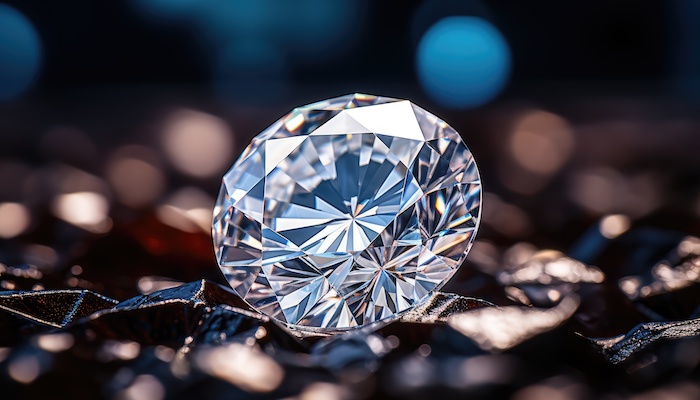Lab-grown diamonds are making waves in the jewelry industry, offering a sustainable and affordable alternative to natural diamonds. They possess the same physical and chemical properties as their mined counterparts but come with a significantly lower environmental footprint. If you’re wondering how these synthetic gems are reshaping the diamond market, let’s dive into the world of lab-grown diamonds.
What Are Lab-Grown Diamonds?
Lab-grown diamonds, also known as synthetic diamonds, are created in a controlled environment using high-pressure, high-temperature (HPHT) or chemical vapor deposition (CVD) methods. These processes mimic the natural conditions that form diamonds deep within the Earth’s mantle, yielding stones that are visually and chemically identical to natural diamonds.
One might ask, “What’s the difference between lab-grown and natural diamonds?” The truth is, there’s almost no visible difference. Both types have the same brilliance, hardness, and clarity. Even professional gemologists often need specialized equipment to distinguish between them.
Benefits of Lab-Grown Diamonds
Lab-grown diamonds offer several advantages over their natural counterparts. First and foremost, they’re more environmentally friendly. Traditional diamond mining is associated with habitat destruction, water pollution, and significant carbon emissions. In contrast, lab-grown diamonds have a much lower environmental impact, as they’re produced in controlled environments without the need for large-scale mining operations.
Moreover, lab-grown diamonds are typically more affordable than natural ones. Because they can be produced at scale, their production costs are lower, leading to more budget-friendly options for consumers. This makes lab-grown diamonds an attractive choice for couples planning their engagement or looking for a special piece of jewelry without breaking the bank.
Lab-Grown Diamonds in the Market
The jewelry industry has embraced lab made diamonds, with many major retailers now offering them alongside natural diamonds. The growing demand for sustainable and ethical products has fueled this shift. Many customers are drawn to lab-grown diamonds because they offer the same beauty and durability as natural diamonds but come with a cleaner conscience.
Jewelry designers and brands are also finding innovative ways to use lab-grown diamonds in their collections. From engagement rings to fashion-forward pieces, these synthetic gems are becoming increasingly popular. As the market for lab-grown diamonds expands, consumers have more choices than ever, with unique designs that cater to different tastes and budgets.
Are Lab-Grown Diamonds the Future?
With the rising popularity of lab-grown diamonds, some wonder if they will eventually replace natural diamonds entirely. While it’s unlikely that natural diamonds will disappear, lab-grown diamonds are certainly carving out a significant niche in the industry. They offer a sustainable and cost-effective alternative that appeals to a wide range of consumers.
However, there are still challenges to overcome. Some people associate natural diamonds with tradition and prestige, and it’s difficult to replace the allure of a gem formed over millions of years. Yet, as consumer preferences evolve and sustainability becomes a top priority, lab grown diamonds will continue to gain traction.
Conclusion: A Shimmering Choice
In conclusion, lab-grown diamonds are transforming the jewelry industry, providing a sustainable, affordable, and beautiful option for those seeking high-quality gems. With their lower environmental impact and budget-friendly price points, these synthetic diamonds are here to stay.
If you’re considering a lab-grown diamond, remember that you’re not just choosing a stunning piece of jewelry—you’re also making an environmentally conscious choice. Whether it’s for an engagement ring, a necklace, or a pair of earrings, lab-grown diamonds offer a sparkling future that aligns with modern values.
Next time you see a diamond, ask yourself: is it from the ground or the lab? Either way, you can enjoy the beauty and brilliance without compromising on ethics or sustainability.






More Stories
Warum sollten Sie professionelle Hilfe in Anspruch nehmen, wenn Sie in Immobilien investieren?
The Role of Medical Transcription in Healthcare
Die Wissenschaft hinter der Carnivore-Diät: Warum eine Ernährung nur mit Fleisch funktioniert